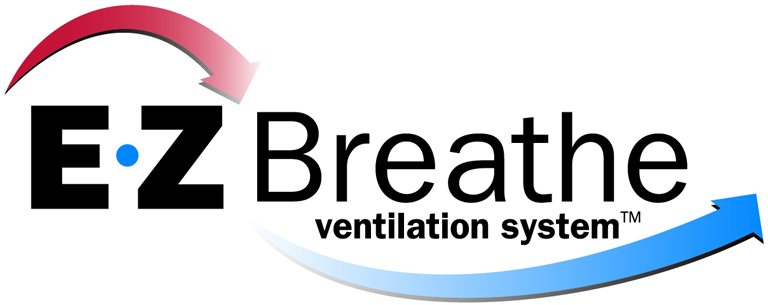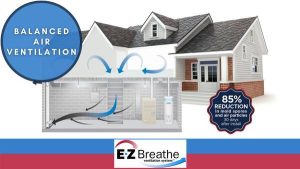When it comes to creating a healthy and comfortable living environment, ventilation often takes a back seat to other home improvement priorities. However, proper ventilation is essential for maintaining indoor air quality, regulating moisture levels, and preventing a host of issues ranging from mold growth to respiratory problems. In this article, we’ll explore the importance of home ventilation, the risks associated with poor indoor air quality, and effective strategies for achieving optimal ventilation in your home.
Understanding Home Ventilation:
Home ventilation refers to the exchange of indoor air with outdoor air to maintain a healthy and comfortable indoor environment. Ventilation serves several critical functions:
- Removal of Indoor Pollutants: Ventilation helps remove indoor pollutants such as volatile organic compounds (VOCs), airborne allergens, and cooking odors, improving indoor air quality.
- Regulation of Humidity Levels: Proper ventilation helps control indoor humidity levels by removing excess moisture, which can contribute to mold growth, musty odors, and structural damage.
- Dilution of Indoor Contaminants: Ventilation dilutes indoor contaminants, including carbon dioxide (CO2) and airborne pathogens, reducing the risk of illness and promoting overall well-being.
- Prevention of Stale Air: Adequate ventilation prevents the buildup of stale air, which can lead to discomfort, stuffiness, and respiratory issues.
The Risks of Poor Ventilation:
Insufficient ventilation can have significant consequences for both your health and the integrity of your home:
- Indoor Air Pollution: Without proper ventilation, indoor air can become polluted with a variety of contaminants, including VOCs from household products, allergens, and combustion byproducts from gas appliances.
- Mold and Mildew Growth: High humidity levels resulting from inadequate ventilation create favorable conditions for mold and mildew growth, which can cause respiratory problems and structural damage.
- Respiratory Issues: Poor indoor air quality due to inadequate ventilation can exacerbate respiratory conditions such as asthma and allergies, leading to discomfort and health complications.
- Condensation and Moisture Damage: Without sufficient ventilation to remove excess moisture, condensation can form on windows, walls, and other surfaces, leading to water damage, rot, and deterioration of building materials.
- Unpleasant Odors: Stagnant air and trapped odors can create a stale, unpleasant indoor environment, affecting comfort and quality of life for occupants.
Effective Strategies for Home Ventilation:
Achieving optimal ventilation in your home requires a multifaceted approach that addresses both mechanical and natural ventilation methods:
Mechanical Ventilation Systems:
- Exhaust Fans: Install exhaust fans in kitchens, bathrooms, and laundry rooms to remove moisture, odors, and pollutants directly from the source.
- Whole-House Ventilation Systems: Consider installing a whole-house ventilation system, such as a balanced ventilation system or energy recovery ventilator (ERV), to provide continuous fresh air exchange throughout the home while minimizing energy loss.
Natural Ventilation:
- Windows and Doors: Open windows and doors when weather permits to allow fresh air to circulate throughout the home.
- Cross-Ventilation: Position windows and doors strategically to facilitate cross-ventilation, which draws fresh air in and expels stale air out of the home.
Air Purification Devices:
- Air Purifiers: Use air purifiers with HEPA filters to remove airborne particles, allergens, and pollutants from indoor air, especially in areas with limited ventilation.
- UV-C Germicidal Lamps: Consider installing UV-C germicidal lamps in HVAC systems to disinfect and purify the air by neutralizing airborne pathogens and microorganisms.
Humidity Control:
- Dehumidifiers: Use dehumidifiers in damp or humid areas of the home, such as basements and crawlspaces, to remove excess moisture and prevent mold growth.
- Humidity Sensors: Install humidity sensors to monitor indoor humidity levels and adjust ventilation and dehumidification systems accordingly.
Regular Maintenance:
- HVAC Maintenance: Schedule regular maintenance for heating, ventilation, and air conditioning (HVAC) systems to ensure optimal performance and airflow throughout the home.
- Filter Replacement: Replace HVAC filters regularly to prevent the buildup of dust, allergens, and pollutants that can impede airflow and reduce indoor air quality.
Building Design Considerations:
- Passive Solar Design: Incorporate passive solar design principles, such as orientation, shading, and thermal mass, to optimize natural ventilation and minimize the need for mechanical systems.
- Ventilation Pathways: Design homes with well-defined ventilation pathways, including operable windows, vents, and air ducts, to facilitate airflow and circulation.
Home ventilation is a cornerstone of a healthy, comfortable living environment, yet it’s often overlooked or underestimated by homeowners. By understanding the importance of proper ventilation and implementing effective strategies to promote fresh air exchange and control indoor humidity levels, homeowners can safeguard their health, protect their property, and enjoy a more enjoyable and breathable indoor environment for years to come. Don’t underestimate the power of fresh air—breathe easier by prioritizing home ventilation today.
Contact the Professionals at EZ Breathe Today! 866-822-7328



